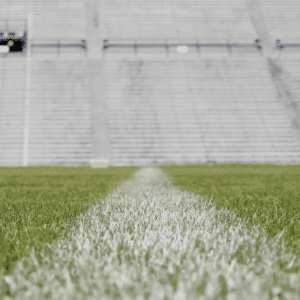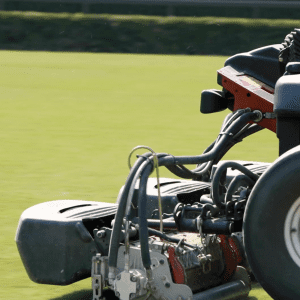Heading to the Hare: The Inside Scoop on Pat Dye Field
- Mary Leigh Oliver

- Nov 19, 2021
- 3 min read

AUBURN UNIVERSITY, Ala. – It’s 4 a.m. on a Saturday in Alabama, and a certain smell is in the air. That’s right, fresh cut football grass. The stage–or field–is set as they say, but just how much goes into setting up this prestigious stage? Auburn University’s critically-acclaimed Pat Dye Field serves as the perfect example of the research, expertise and extensive care that turfgrass and athletic turf requires.
Eric Kleypas, the Auburn University director of athletic turf and grounds, and Athletic Turf Manager Zachary Willard work to prepare Pat Dye Field for when the first whistle blows. As the team prepares for the upcoming football season, Kleypas and Willard provide a synopsis of their observant, research-dependent approach to achieving turfgrass perfection.
For the Love of Turfgrass
As Kleypas puts it, every blade of Pat Dye Field’s 419 Tifway Bermudagrass is treated with “TLC,” a little tender loving care. With a balance of knowledge, experience and a gut feeling, Auburn University’s football field receives a significant amount of TLC to maintain its lush complexion.
“The unique thing about Pat Dye Field is that it is 419 Tifway Bermuda grass until about mid-October,” Kleypas said. “Then, we overseed with perennial ryegrass, so we will have green grass throughout the year.”
When spring rolls around, they spray out the perennial ryegrass and focus on reestablishing the Tifway Bermudagrass. Thus, the cycle starts again. The perennial ryegrass not only keeps the field a pretty shade of green all season, it also provides a safer playing surface for the team.
“When we overseed and keep the grass actively growing, it creates a safe and healthy field for our players throughout the season,” Willard said.
Working Overtime
Think maintenance is only something done during football season? Well, you would be wrong. The team that manages Pat Dye Field works overtime, both during and in the off-season. When mowing, the team sticks to the 1/3 rule for the height of the grass.
“In the summer when it is really hot, we’re mowing about four to six times a week,” Willard said. “When you cut over 1/3 of the leaf blade at a time, it will give the field a scalped look.”
Even throughout the season, the team never cuts Pat Dye Field less than three times each week. Think you’ve mowed enough? Mow again. All the efforts the team puts into the management of the field certainly lives up to the Auburn Creed of believing in “work, hard work.”
“It’s all based on research,” Kleypas said. “It’s the only unbiased opinion we have.”
Extension Takes the Field
David Han is an Alabama Cooperative Extension System specialist whose specialty areas include turfgrass management and sports field construction and maintenance. As he puts it, Auburn University’s football field is top tier.
“Pat Dye Field at Jordan-Hare Stadium is always one of, if not the best, fields in college football,” Han said.
The teamwork mentality between Extension and the Auburn University athletic turf and grounds team is the recipe for turf perfection.
“We’re calling Han not only because he specializes in diseases, but to see what he is seeing across the state,” Kleypas said. “We’re trying to get a sense of what is coming before it hits us.”
Kleypas and Willard look to Han and Alabama Extension for research. They return the favor by offering hands-on learning opportunity to Extension stakeholders. They often host Extension team meetings and Han’s turf management courses on Pat Dye Field.
“We rely heavily on our turfgrass school at Auburn, so that if there’s a question we want answered, we’ll answer it through research,” Kleypas said.
Your Own Little Slice of Turfgrass Heaven
Looking to have a residential Pat Dye Field? Alabama Extension can help. If Kleypas and Willard’s round-the-clock maintenance seems a little daunting, homeowners can contact Han and other Alabama Extension home grounds, gardens and home pests team members for some beginning steps. Information on the establishment and management of turfgrass is also available on the Alabama Extension website at www.aces.edu.










Comments